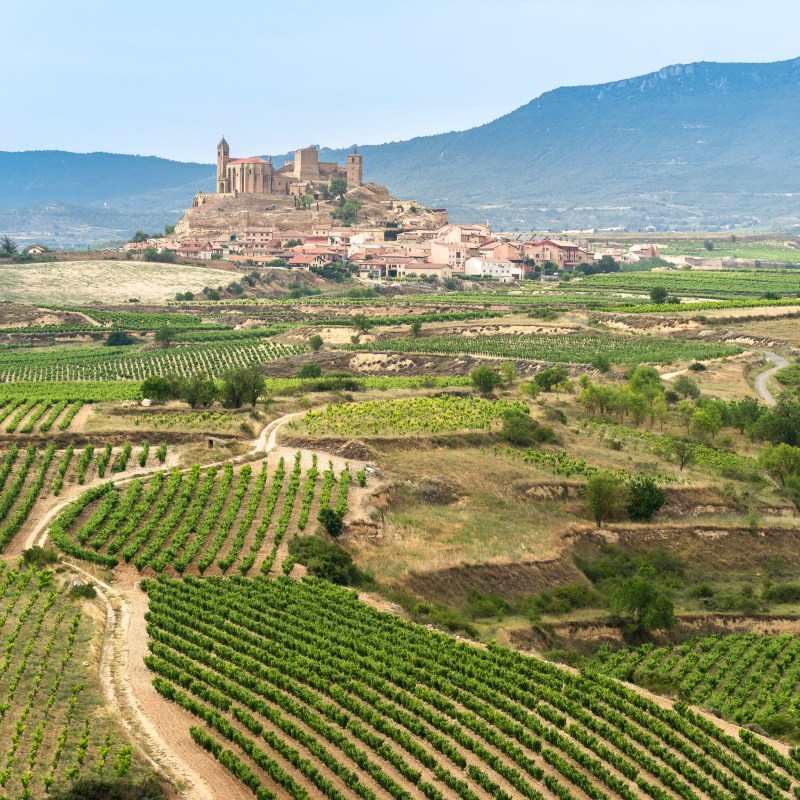
There are many wine experts out there, including those who actually know what they are talking about when it comes to the world’s best wine regions, be it the soil, the orientation of the vineyards, the quality of the product, or the quantity of wine produced. I am simply an enthusiastic wine drinker and an equally enthusiastic traveler who has also had the advantage of having lived near some superb wine-growing areas around the globe.
Videos by TravelAwaits
My favorite spots might be different from those chosen by a wine expert, but they include areas that produce very drinkable wine at not too horrendous prices — regions that would be fun to visit even if they did not produce wine, and some regions that might just bring back some great memories of travel and many a good glass enjoyed while abroad. Californian wine regions and United States vineyards have been extensively covered in TravelAwaits, and so I have concentrated on other regions.
Some might turn their noses up at my unsophisticated choices; but then, everything in the world is subjective. How boring would it be if we all liked the same wine? And how expensive? Have a read, and let’s see if you agree and are inspired to put one or two of these on your bucket list for future trips.

1. Champagne, France
I might as well start with my favorite tipple in the world — Champagne. Since I live in Paris, this region is practically on my doorstep, less than an hour’s drive away, and while still a luxury, Champagne is infinitely more affordable in France than anywhere else in the world. The world’s most famous bubbly treat is only allowed to be called Champagne if it’s produced within the region that has a tightly drawn border. Many a wine farmer has a vineyard literally yards away from the border — growing vines in the same soil and under the same conditions, and producing wine by the same method — but the wine has to be called cremant instead of Champagne. But it goes a long way to keep the product exclusive.
The Champagne region has two centers: Epernay and Reims, both home to world-class Champagne houses, ranging from Castellane and Dom Perignon at Moet et Chandon in Epernay to Veuve Clicquot and Taittinger in Reims. Both towns have their own charm as well — Epernay being small and quiet, and Reims full of history and life. Both are easily accessed by train from Paris, and both have plenty of Champagne houses to keep you occupied for a day or two (or three).
For a luxury tour, Moet wins hands down. The setting is quite magnificent and historic — after all, Dom Perignon invented Champagne. But it’s difficult to beat Veuve Clicquot’s fun branding and merchandising. Everything comes in the special Veuve yellow (yes, it is yellow, not orange), and the Widow Veuve was way ahead of her time.
You can easily find a tour of the area that includes pickup from your Paris hotel and customize your day according to your preferences.

2. Bordeaux, France
Bordeaux is not only a beautiful city to visit, but it is also a superb wine region, split in half by the Garonne River. In total, there are some 30 smaller regions — including Medoc, Graves, Saint-Emilion, Pomerol, and Entre-Deux-Mers — and nearly 300,000 vineyards. They all produce very distinct wines, with popular grape varieties including merlot, cabernet sauvignon, cabernet Franc, semillon, and sauvignon blanc.
Bordeaux itself is the best place to set up camp, since the city is wonderful and also has the Cite du Vin, a superb, modern, interactive wine museum where you can brush up on your knowledge before heading out to the vineyards. Where you visit really depends on your tastes, but stopping by the old town of Saint-Emilion is a must, even just to taste the fresh oysters over a glass of chilled white wine at the market.
Pro Tip: My favorite way to explore the wine regions around Bordeaux is by private car, with a driver who takes you to your chosen vineyards, waits for you, and eventually deposits you safely back at your hotel. You’ll find a wide selection of customizable tours available.

3. Mornington Peninsula, Victoria, Australia
When I lived in Melbourne, I was surrounded on three sides by superb wine regions — the Mornington Peninsula, the Bellarine Peninsula, and the Yarra Valley. But my favorite is the Mornington Peninsula, because the area itself is just stunning, with gorgeous beaches, treks through the countryside, picturesque towns, and superb vineyards to stop at.
Some 50 cellar doors are open for you to sample around 200 wines made locally from the mostly pinot noir grapes. Many cellars have not only a stunning setting, but also small restaurants that offer the perfect food to accompany and highlight their wines. You can book a tour from Melbourne to sample a handful of vineyards and have a look around the peninsula while you are there.
Pro Tip: If you are driving yourself, remember to appoint a designated driver. Consider the scenic round trip from Melbourne down the Mornington Peninsula, crossing over to the Bellarine Peninsula by ferry from Sorrento and heading back to the city from there.

4. Stellenbosch And Franschhoek, South Africa
Around 30 miles from Cape Town lies the university town of Stellenbosch, the heart of the Stellenbosch wine region, the largest and oldest of South Africa’s wine-producing regions. You have a choice of about 150 vineyards and can add more by popping up to Franschhoek, just east of Stellenbosch. In the Franschhoek Valley, a fun way of experiencing the surroundings and the wineries is by hop-on, hop-off wine tram. Seven lines connect a select few vineyards, and you’ll meet people from around the world coming together in this remote spot for the wine.
Pro Tip: Every weekend, the Root 44 Market opens in Stellenbosch, full of stalls selling arts, crafts, and superb food to help soak up that wine.

5. Veneto, Italy
I love light reds — not those heavy ones that often accompany a steak, but those you can sip throughout the night and still be able to stand up. One of those light reds is valpolicella, a Northern Italian red from the Veneto region. The region is home to Venice and Verona, cities brimming with art, culture, and history.
The region has a distinct microclimate produced by the juxtaposition of the Alps to the north, the gorgeous Lake Garda to the west, and the Mediterranean lagoons to the southeast. The region’s grapes — corvina, corvinone, rondinella, and molinara — produce soft reds, while the ever-popular pinot grigio produces the Italian Champagne equivalent, Prosecco. Add the crisp, fresh soave and the oh-so-quaffable Bardolino, and you have a region you could quite happily settle down in.
Pro Tip: You can’t go to Italy and not experience the food as well as the wine, so it’s best to book a tour that combines food and drink.

6. Casablanca, Chile
This is not the best wine region in Chile, but it is one you can easily access if you are on a short trip to the area. It’s conveniently located between Santiago and Valparaiso, two cities that tend to be on everybody’s to-do list.
Known for its white wines, made from mostly sauvignon blanc and chardonnay grapes but also gewurztraminer and riesling, the region offers the perfect sips to sample on a hot day.
Pro Tip: If you are short on time, why not combine a day trip from Santiago to Valparaiso with a stop at a winery along the way? It’s the perfect three-in-one option.

7. Rioja, Spain
While I just admitted to loving light, fresh reds from Italy, if given a choice, I would always opt for a glass of Rioja with a selection of tapas on the side. The Rioja region lies south of Bilbao, south of the Cantabrian Mountains in Northern Spain.
Made from the indigenous tempranillo grape, which originated in Spain and is still its local treasure, a Rioja comes in four classifications: Rioja, Crianza, Reserva, and Gran Reserva, with Rioja being the youngest, often only matured for a few months, and Gran Reserva being the granddaddy of them all, aged in oak for at least two years and stored for a minimum of three more years in the bottle. The strength of the tipple increases accordingly — as does the price.
Rioja is quite an inaccessible region, not on the usual tourist route. You can, however, book guided day tours from Bilbao.
